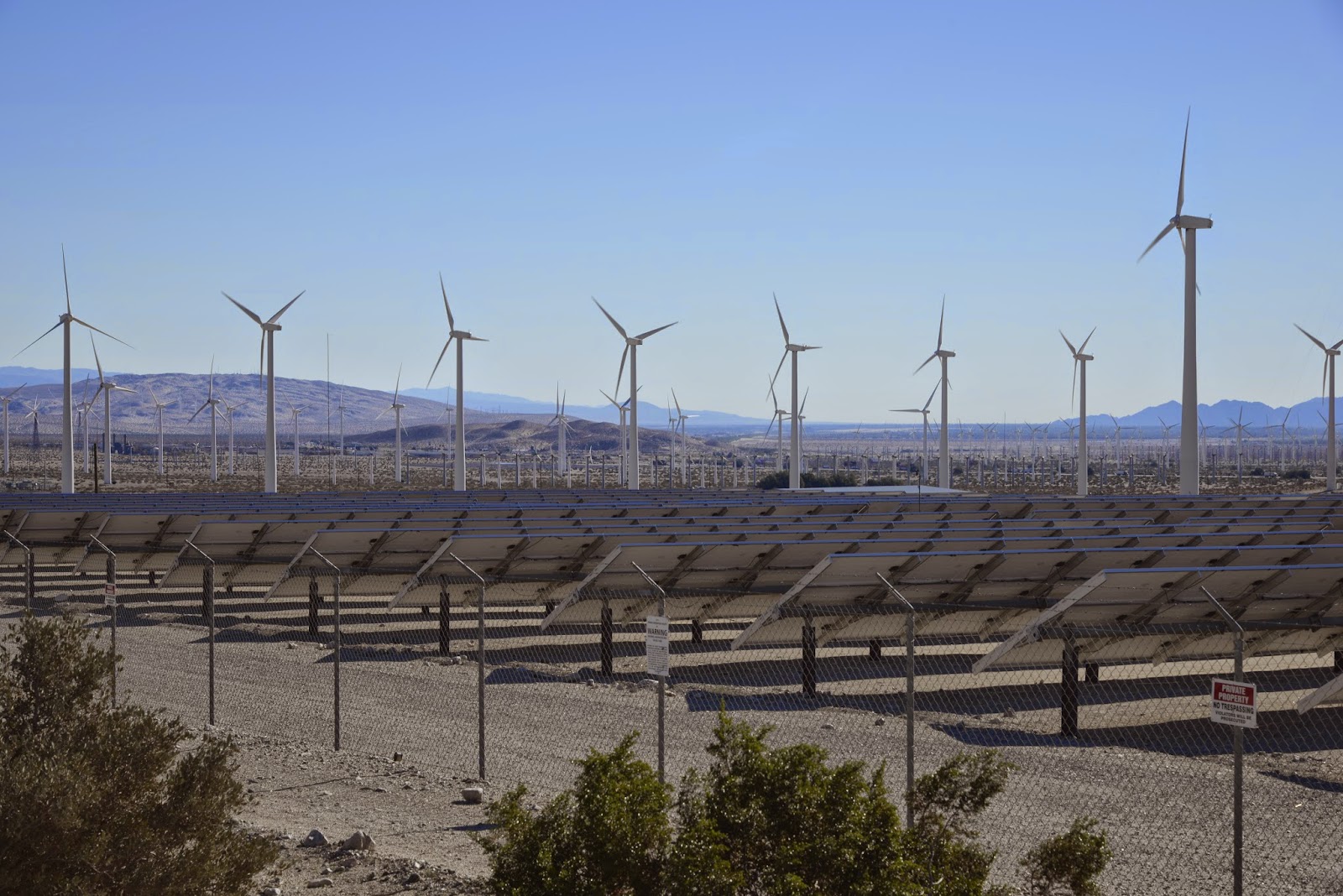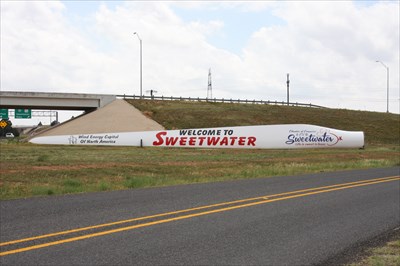Before we left home I had briefly reviewed virtual geocaches in the area, not so much as targets for caching but as potential interesting items to see while we were in the area. That turned up Slab City and Salvation Mountain near Niland, CA, a whole host of geothermal plants and bubbling mud pots south of Niland, and some interesting geology (pumice rock) along the southeastern shore.
 |
| Map from the Sonny Bono Salton Sea National Wildlife Refuge brochure |
We thought that the information desk at the State Recreation Area might also be able to suggest something interesting. The first and only thing out of his mouth was Bombay Beach, which I found on the map he gave us (see below) was along route 111 at the end of the State Recreation Area.
 |
| Map in the Salton Sea State Recreation Area brochure |
I had never heard of Bombay Beach and knew nothing about it, but the person behind the desk also gave us the one page hand out shown below which helped a little. With these two pieces of paper in hand, we headed out.
 |
| Hand out of things to do from the info desk at the Salton Sea State Recreation Area. |
San Andreas Fault
Route 111 heading south was an interesting drive. It provided almost continual nice views of the Salton Sea. There were multiple signs indicating potential flooding, presumably after rain. There were also multiple channels or irrigation ditches cut perpendicular to the road that ran down to the sea. Many of these looked newly cut. We wondered if the recent rains had required reopening of some of these with earth movers of some type.One thing we did not know until later was that the road, at least right in front of the entrance to the State Recreation Area, runs along the top of the San Andreas Fault. This page has an interactive map of the location of the San Andreas fault. Interesting to me was the fact that the southern end of the San Andreas Fault is near the eastern edge of the Salton Sea, 2.5 miles northwest of Bombay Beach. I have ordered the Field Guide to the San Andreas Fault (although it has not yet arrived) and hope to use that to plan some potential future excursions on return trips to California. I had not realized that I-10 parallels it through the Coachella Valley. We have also been quite close when we are on the far eastern edge of the Los Angeles basin.
I am not sure what will constitute the "Big One" in terms of earthquakes and where it will be. However, I could not help but notice reference to the fact that the southernmost stretch of the San Andreas fault is thought capable of a magnitude 8 event, as large as any known California earthquake. It was not by accident that the 2008 Great California Shakeout modeled a 7.8 earthquake originating near the Salton Sea. The USGS paper outlining the shakeout scenario notes that major earthquakes in this area have occurred on average every 150 years. The last one was 300 years ago. Hmmm.....
Bombay Beach
As noted above, we did not know what to expect concerning Bombay Beach, but turned in at the large sign along the road. I don't know what I expected, but what we found was not it, especially since it was a recommended stop by the state park. As noted in a March 2010 article on mentalfloss.com, "Bombay Beach may be the most famously depressing place in California; the poster child for the post-apocalypse." Post-apocalyptic is an apt description. |
| Picture from Wikipedia entry for Bombay Beach of a salt encrusted trailer on the water side of the dike in Bombay Beach. ("Salton Sea homes" by Own work by User:GregManninLB. Original uploader was GregManninLB at en.wikipedia - Transferred from en.wikipedia; transferred to Commons by User:Atmoz using CommonsHelper.. Licensed under Public Domain via Wikimedia Commons - http://commons.wikimedia.org/wiki/File:Salton_Sea_homes.JPG#mediaviewer/File:Salton_Sea_homes.JPG) |
Bombay Beach is a 10-by-10-block square of houses and mobile homes. Incorporated in 1929, much of the town was flooded and destroyed by Hurricane Kathleen (and the Imperial Valley flood) in 1976 and Hurricane Doreen in 1977. The worst part of the devastation is now behind a high dike. We drove up over the dike to see what was left of the town on the Salton Sea side. There the remnants of homes and trailers sit rotting, partially submerged in dried mud.
However, even on the "dry" side of the dike, many abandoned dwellings are interspersed among occupied homes. Don't get me wrong, I love ghost towns. Bodie, CA was one of the best places we have ever visited. But this isn't really a ghost town. It still has a population of several hundred people (295 at the 2010 census). I think it was probably the mixing of abandoned dwellings and occupied homes that made this so depressing.
It was probably unjustified, especially since it was in the middle of a Sunday afternoon in broad daylight, but we felt very uneasy and did not linger even to take pictures. I suspect we are not the only people to respond this way. Numerous documentaries, movies, and tv shows have been filmed here. It is the frequent subject of photographers, including a truly outstanding work of "light painted night photography" (not Photoshop!). Bombay Beach is also supposedly the inspiration for the fictional town in the video game Grand Theft Auto V. (I am not familiar with Grand Theft Auto, but I could see how this would fit with my stereotype of what would be included.) However the epitome of my reaction to Bombay Beach is captured in the fact that one of the occupied homes had "The Hills Have Eyes" scrawled on the outside. Although we did not get a picture of the house, googling the term along with Salton Sea brings up plenty of examples. I certainly saw it many times after I got home when I was looking for information online about Bombay Beach. Of course, since I live in a cave, I did not understand what that meant until I looked it up. Here is the description of the movie "The Hills Have Eyes" from the IMDb website:
A suburban American family is being stalked by a group of psychotic people who live in the desert, far away from civilization.Yep, that was the feeling I had the entire time we were there. Next time I will probably feel differently since I will know more about what to expect. Perhaps we can stop at the Ski Inn ("lowest bar in the western hemisphere") where we can meet some of the locals and experience one of their famous greasy hamburgers.
Salvation Mountain
Moving right along I set the gps for Salvation Mountain, our next destination. Turning east at the intersection in the center of Niland, we followed the road for several miles to Salvation Mountain.Although I had never heard of Bombay Beach, I was quite familiar (at least by reputation) with Salvation Mountain. As described in Wikipedia, Salvation Mountain is an art installation covering a hill in the Colorado Desert, north of Calipatria near Slab City.
However, I was still surprised when seeing it in person. A better description, now that I have seen it in person, is from an article in National Geographic last year
Salvation Mountain is a literal man-made mountain 28 years in the making, covered in half a million gallons of latex paint. What started as a small monument made of dirt and painted cement became, over time, a sprawling adobe and hay-bale mountain complex, with peripheral structures made of telephone poles, tires, and car windows, as well as art cars and sculptures, all painted in a patchwork of stripes and color blocks of whatever paint was donated that week.
Even having previously seen pictures, Salvation Mountain is much taller than I realized.
 |
| Salvation Mountain - note the people standing to the left of the cross and at other locations along the top. |
It also extends laterally for some distance.
 |
| more of Salvation Mountain |
There is much more detail work on the outside than I had imagined.
 |
| Some of the detail in the front of Salvation Mountain |
 |
| Oops...I did not see this sign until later. |
The most surprising thing to me was that there was an interior to some parts of the structure. This included meandering pathways through multiple rooms.
 |
| Inside a portion of Salvation Mountain |
 |
| More of the inside of Salvation Mountain |
The entire mountain was created by Leonard Knight starting in the mid-1980's. He worked on it until his failing health required him to move to a nursing home several years ago. Although Leonard died in February 2014, the Mountain is still not finished. Volunteers continue work on maintaining the existing mountain and creating the museum and other parts he envisioned. The history of how all of this came to be is on the official Salvation Mountain website, but I especially like this description that appeared in The Economist in 2003. The article is now somewhat dated, but it captures much of the essence of Salvation Mountain, at least as it appeared to me as an outsider:
IN THE fierce heat of the Californian desert, you feel as if you have seen Babylon: a shimmering hillside garden of cascading waterfalls, flowing streams and verdant trees. Once you get closer, you find that Salvation Mountain is actually a huge collage, 40 feet high and 100 feet wide, built on the side of a desert bluff from a mixture of adobe and household junk (kettles, refrigerators and great trees of used tyres) and then painted with garish animals, birds, flags and religious writings.
The aim of Salvation Mountain is appropriately Californian: to inspire people to love each other. Its creator, Leonard Knight, a gnarled veteran of both the Korean war and the 1960s, originally thought of celebrating his religious fervour by building and flying a 300-foot-high hot-air balloon. That project failed when the fabric rotted; so since 1985 he has been working on the mountain. So far, he has used up 100,000 gallons of paint.
Salvation Mountain stands at the entrance to “Slab City”, an old army base that has now been converted into a somewhat Mad-Maxish desert town—part trailer park, part new-age community. The residents of Slab City offer materials for the Mountain and sustenance for the artist, who lives in a couple of luminously painted trucks.
The Mountain has its disbelievers. In 1994 state officials tried to bulldoze it, claiming that the toxins in Mr Knight's paint were a health hazard. Soil tests proved them wrong, and now Mr Knight is dangerously close to respectability. Senator Barbara Boxer has described Salvation Mountain as a national treasure and “a sculpture for all the ages”. The Folk Art Society of America has declared the site “worthy of preservation and protection”.
On a good day it gets 150 visitors, each of whom is escorted up the bright yellow pathway that reaches the top of the bluff. For Mr Knight, the pervasive message is “God is love”, but he also sees his work as an antidote “to those people who tell you how you should deal with your spiritual side”. He begins to elaborate on this theme, but then stops. “I'm letting my mouth get in the way again. Let the mountain do the talking”. Which it does very well.
 |
| Turkey with the model of Salvation Mountain. Leonard Knight's brightly painted trucks, his home for nearly 30 years before his death, are in the background. |
For more pictures of Salvation Mountain and its creator, Leonard Knight, see this photo essay by National Geographic photographer Aaron Huey.
































